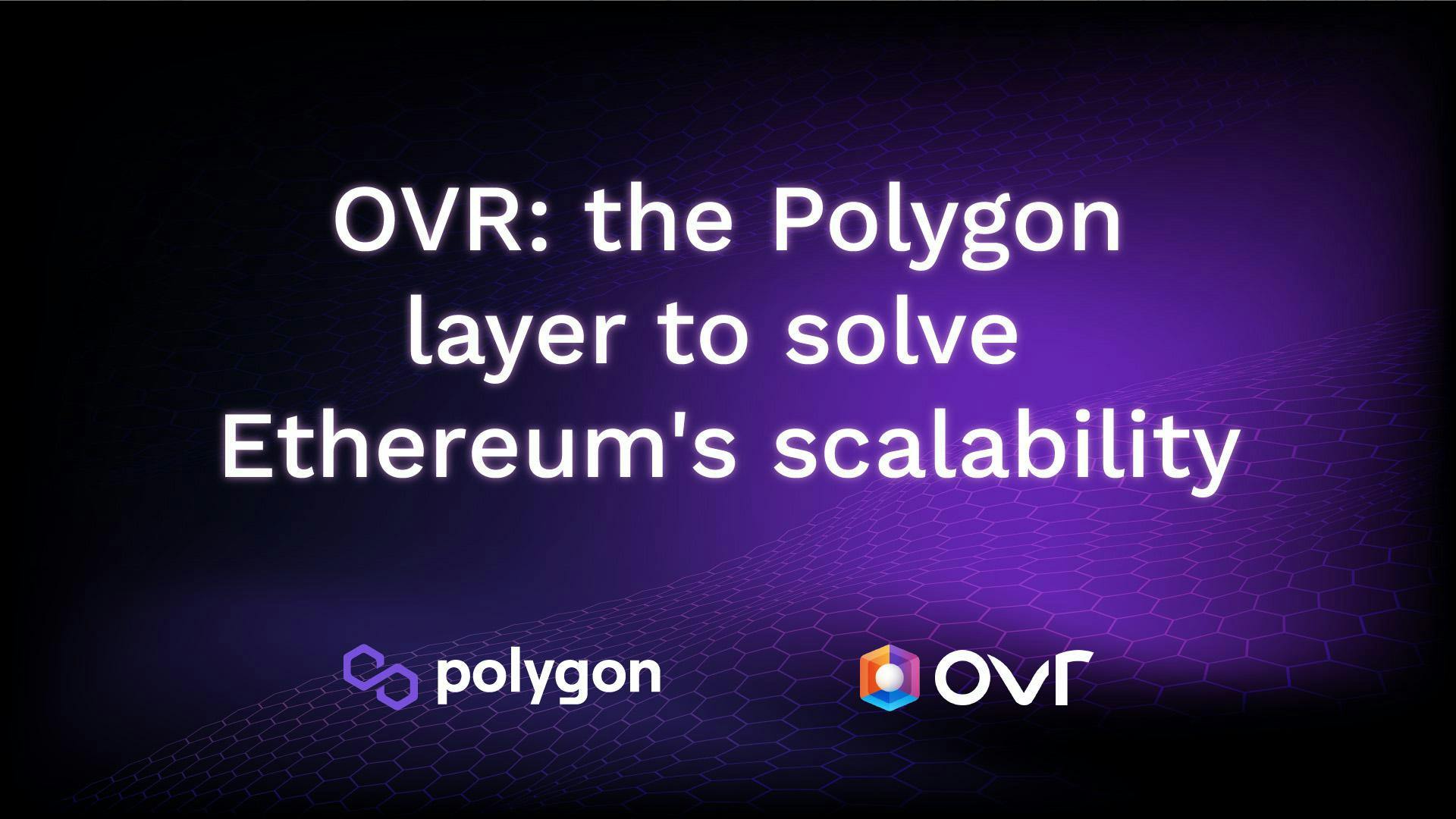
OVR to Use Polygon Layer to Solve Scalability Issue of Ethereum
2022-01-25
The migration started in January
Scalability has been one of the big themes OVR has been exploring since its inception. As mentioned in the official company blog OVR has been closely following all of the available solutions, and finally decided to move to Polygon.
Why has OVR chosen Polygon?
But why Polygon, you may ask? The blockchain scalability landscape is vast and quickly evolving; choosing one solution over another is not a simple task, but it’s a multidimensional problem with many variables and forecasts to digest.
At OVR the decision was taken moving from the following first principles:
- Transaction costs;
- Decentralization trade-offs and project vision;
- Current adoption;
- Vicinity to the Ethereum ecosystem and EVM compatibility.
Lately, OVR has been exploring the opportunity to move to Optimistic or ZK Rollups to minimize decentralization trade-offs. Yet, both solutions did not demonstrate enough adoption, scalability, or lacked (ZK Rollups) EVM compatibility.
On the other side, Polygon is very close to the Ethereum ecosystem, shares the same values, and has massive scalability and adoption.
Currently, there are more active addresses on Polygon than Ethereum.
Thus, not only Polygon offers the scalability that OVR needs to make NFT minting and transfer cheap enough to be a negligible cost for our average transaction sizes, but its adoption and closeness to Ethereum dramatically reduces the risk of ending up in a “ghost chain.”
Network effects and Metcalfe’s Law are critical in blockchain, no matter how good your project is, ending up in the wrong chain and ecosystem will jeopardize adoption and growth.
OVR believes that as promoters of such an ambitious project as the foundation for the AR Metaverse, avoiding platform risks as much as possible.
Nobody can predict the future, yet Polygon’s current adoption and market sentiment is a very strong indicator of how it will stand to the test of time.
But what about decentralization?
Is Polygon not as decentralized as a rollup, right? Well… Yes and no…
While it’s true that Polygon is not a rollup, stating that it’s less decentralized than the actual rollups out there it’s not necessarily correct.
In its current configuration, Polygon can be categorised as a Commit Chain, and its security model is highly reliant on the Ethereum infrastructure. Please refer to the following videos for an in-depth explanation of how Polygon consensus currently works:
And that’s not all; Polygon is agnostic about the best L2 solution: Commit Chains, ZK Rollups, and Optimistic Rollups take different trade-offs in their path to scalability. The idea is that there is not a single solution that can fit all the diverse needs of other blockchain projects. A Defi Protocol, for example, has very different decentralization and scalability needs if compared to an NFT game.
Because of that, Polygon, in its current configuration, has under its umbrella both the Commit Chain and Hermes ZK rollup, and it’s actually building three more ZK Rollup chains that will serve different needs.
When Polygon?
OVR will start migrating its infrastructure to Polygon in January with the transfer of the OVRLand ownership layer.
Migration will happen in 2 phases:
In the first one, all new minting will occur by default on Polygon. UX will not change; for the primary market, it will be possible to buy from Ethereum, BSC, and Polygon with OVR tokens. Merkle Proof based Secondary Market will remain in place unaltered.
In the second phase – February -, all of the OVRLands saved as Merkle Proofs on Ethereum will be minted to the owner’s wallets on Polygon. Over 24k different wallets that own more 700k OVRLands. That will enable fully decentralized ownership of OVRLands and public scrutiny on the massive scale of minted lands and the owners community. Light minting function will disappear, all of the purchased OVRLands will be directly minted as NFTs on Polygon.
The secondary market will be rebuilt from scratch in a fully decentralized fashion; exchanges between users will be exclusively intermediated by smart contracts.
Owners of OVRLands already minted as NFTs on the Ethereum blockchain will be able to transfer those to Polygon, OVR will refund the gas costs for the transfers with OVR tokens on Polygon.
And that’s not all… Low gas costs will enable multiple features that were impossible on Ethereum’s mainnet. Renting smart contracts will be deployed, allowing for the monetization of valuable OVRLands. Thanks to low-cost NFT minting, Avatars, OVRMaps, and 3D objects will all become cross-metaverse assets powered by WEB3.
